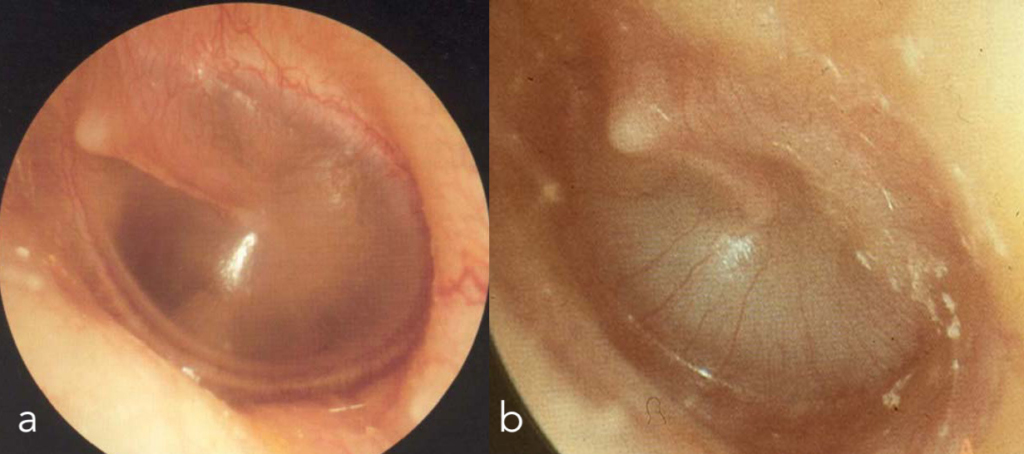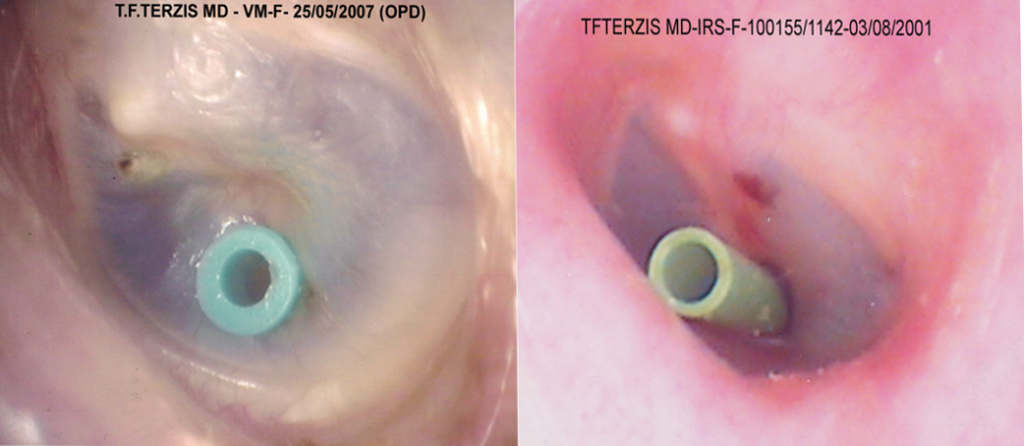Secretory Otitis Media (Glue Ear)
In children who have chronic adenoid inflammation or hypertrophy, ventilation of the middle ear space is impaired, due to dysfunction of the eustachian tube. Resulting negative pressure induces accummulation of clear fluid behind the eardrum. With time, the fluid becomes thick, resembling glue (glue ear). Usually the only symptom is conductive hearing loss. In the abscence of troublesome symptoms , the condition can run undetected for a long time, sometimes for years, and the child is exposed to all the effects of the hearing loss. There may be delayed speech development or other speech problems. Negrected cases may have bad school performance, or even psychological impact, due to difficulty in communication with other kids.

Glue ear in children is very common. It has been reported that 51% of the children of age between 3 and 4 have some fluid in their ears. Of course, all these kids do not have severe hearing loss or speech problems, but they are exposed to the danger of developing them. This is why, in many countries a screening test for secretory otitis is done in all children before Elementary school. We also advise parents to check the hearing of their kids in play and everyday life, in order to ask for help, in case of any doubt.

Treatment of secretory otitis is initially medical. In persisting cases, surgical treatment will be discussed with the parents. The usual operation, indicated for most cases, is combination of adenoidectomy and ventilation tube (grommet) insertion (image). Hearing returns to normal immediately after the operation, and the child is discharged home a few hours after recovery from the anaesthesia. The grommet is dropped out by the healing eardrum a few months later. Until then, keeping the ear dry in every contact with water (bath, pool or sea) is advised.
In adults, secretory otitis is not so common and is managed with care, as in adenoid hypertrophy. Endoscopy of the postnasal space and imaging tests (CT, MRI) may be needed, to exclude malignancy.
This website aims at providing simplified scientific information and not medical advice on specific conditions or individual cases. In this respect, it cannot replace the consultation and documented opinion of a specialist physician.

